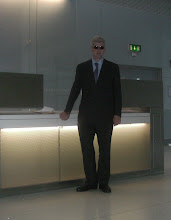It has been found that electrostatic machines operating in a vacuum do not have the iron loss, copper loss, or wind age loss of electromagnetic machines, thereby achieving their extremely high efficiency. However other considerations have prevented these machines from coming into widespread use. Specifically prior electrostatic machines of this class have normally been of large size relative to their power capacity. Furthermore practical use of prior machines has normally required extremely high voltage operation. Both of these are drawbacks but in tidal calming these show positive result from the nature of the electrostatic field, its requirement of high potential gradients for field strengths comparable to electromagnetic fields. there are limitations on potential gradients imposed by the breakdown of the dielectric medium. Therefore considerable insulation and safety equipment has been required in prior electrostatic systems and operation at moderate voltages has not been practical but at sea this could be easier to modify.
 At Brook haven National Laboratory. The curve of a "single atom thick" walls reveal a brain-like crystalline carbon structure that may hold untold potential as the next phase in energy storage devices.
At Brook haven National Laboratory. The curve of a "single atom thick" walls reveal a brain-like crystalline carbon structure that may hold untold potential as the next phase in energy storage devices.



No comments:
Post a Comment